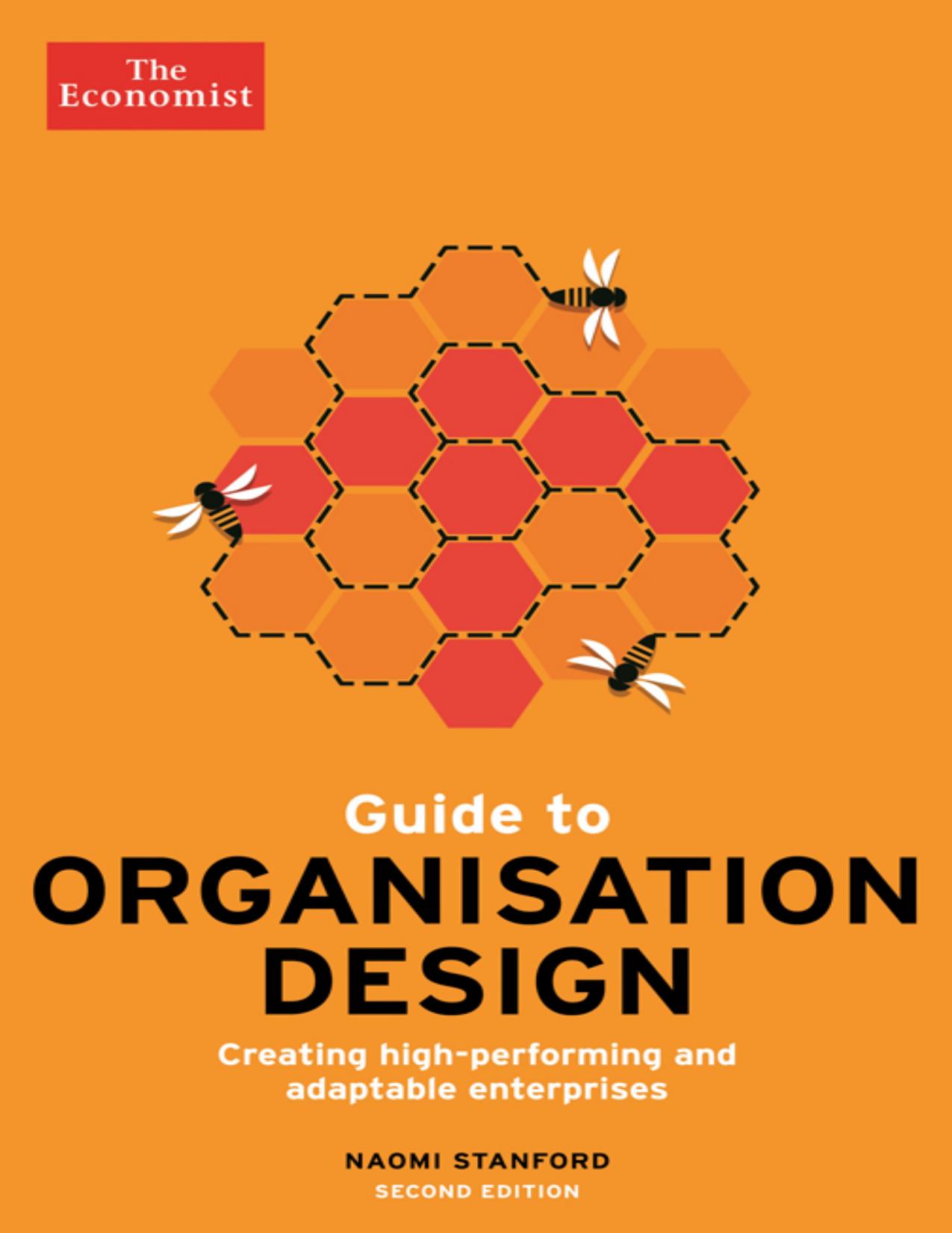Guide to Organisation Design 2nd Edition by Naomi Stanford ISBN 1610395395 9781610395397
$70.00 Original price was: $70.00.$35.00Current price is: $35.00.
Instant download Guide to Organisation Design Naomi Stanford after payment
Guide to Organisation Design 2nd Edition by Naomi Stanford – Ebook PDF Instant Download/Delivery: 1610395395, 978-1610395397
Full dowload Guide to Organisation Design 2nd Edition after payment
Product details:
ISBN 10: 1610395395
ISBN 13: 978-1610395397
Author: Naomi Stanford
Guide to Organisation Design 2nd Edition: Business failure is not limited to start ups. Industry Watch (published by BDO Stoy Hayward, an accounting firm) ‘predicts that 17,043 businesses will fail (in the UK) in 2006, a further 4 per cent increase from 2005’. In America between 1990 and 2000, there were over 6.3 million business start-ups and over 5.7 million business shut-downs.
Risk of failure can be greatly reduced through effective organizational design that encourages high performance and adaptability to changing circumstances. Organization design is a straightforward business process but curiously managers rarely talk about it and even more rarely take steps to consciously design or redesign their business for success.
This new Economist guide explores the five principles of effective organization design, which are that it must be: driven by the business strategy and the operating context (not by a new IT system, a new leader wanting to make an impact, or some other non-business reason). involve holistic thinking about the organization be for the future rather than for now not to be undertaken lightly – it is resource intensive even when going well be seen as a fundamental process not a repair job. (Racing cars are designed and built. They are then kept in good repair.)
Guide to Organisation Design 2nd Edition Table of contents:
-
Introducing Organisation Design
- Organisation design: what it is and is not
- Organisation design is driven by strategy and operating context
- Organisation design requires holistic thinking
- Designing for the future is better than designing for now
- Organisation design happens as much through social interactions as planning
- Organisation design is always resource intensive
- Organisation design is a fundamental process, not a repair job
- Summary
-
Models, Approaches, and Designs
- Models
- Approaches
- Designs
- Reflections on the case study
- Tools for the case study
- Summary
-
Organisational Structures
- Functional structure
- Divisional/product structure
- Divisional/geographic or market structure
- Divisional/process structure
- Divisional/customer structure
- Matrix structure
- Network structure
- Cluster structure
- “Life-form” structure
- Structure decisions
- Layers and spans
- Reflections on the case study
- Tools for the case study
- Summary
-
Planning and Sequencing the Organisation Design
- High-level design plan and sequence
- The business case for change
- The organisation design programme
- The four phases of the design process
- Reflections on the case study
- Tools for the case study
- Summary
-
Measurement
- Choosing measurement tools
- Measurement principles
- Reflections on the case study
- Tools for the case study
- Summary
-
Stakeholder Engagement
- Five steps of the stakeholder engagement process
- Factors indicating stakeholder engagement
- Reflections on the case study
- Tools for the case study
-
Leadership and Organisation Design
- Formal leadership in organisation design
- Informal leadership
- Working together
- Reflections on the case study
- Tools for the case study
- Summary
-
Culture and Group Processes
- Organisational culture
- Group processes
- Reflections on the case study
- Tools for the case study
- Summary
-
Continuous Design
- Why continuous design capacity is required
- Building the capability for continuous design
- Reflections on the case study
- Tools for the case study
- Summary
People also search for Guide to Organisation Design 2nd Edition:
naomi stanford guide to organisation design
the economist guide to organisation design
how to guide design
how to design an organizational chart
guiding principles for organizational design



